Film screenings that celebrate science, cinema and art
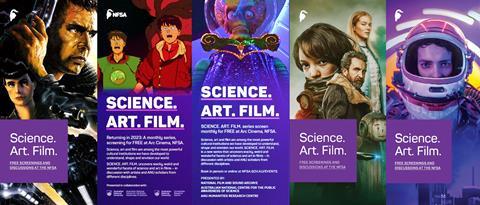
Anna-Sophie Jürgens has always loved cinema. Now a senior lecturer in science communication at the Australian National University (ANU), Jürgens has united three of the ‘most powerful cultural institutions we have developed to understand, shape and envision our world’ in her programme, Science. Art. Film., in collaboration with the National Film and Sound Archive (NFSA), Canberra.
The idea germinated from experiences as an undergraduate student in Munich, Germany, where she took a course focused on the aesthetics of violence in cinema.
‘Each Thursday, 8pm, we went to a cinema, watched a film (super violent films like Silence of the Lambs or A Clockwork Orange) and then there were professors and experts who talked about it,’ says Jürgens. ‘And I thought this was so transformational. Each Thursday I left the cinema as a different person, and I always kept thinking that this is the type of experience that a university should provide. This is really where new knowledge is created; where you have curiosity, curiosities and curious people coming together and building new bridges.’
Coming out of Covid-19 social distancing restrictions in Australia, Jürgens saw an opportunity to create a complementary experience at The Australian National Centre for the Public Awareness of Science (CPAS) at the ANU. As an academic who had joined the centre during the pandemic, Jürgens was particularly driven to meet colleagues and students in person and build community at the university.

‘I started the Science. Art. Film. series as an underground guerilla series in our lecture theatre’, she says. ‘And for about a year … every month I showed a film and invited students and colleagues to just join and bring their sleeping bags and yoga mattresses. We all laid down on the floor watching films and it was really cool.’
As the community of ‘cinema-goers’ grew, Jürgens invited academic colleagues to join her in interactive discussions about each film. Soon the event was so popular that it was time to find a bigger venue for a real cinema experience.
In 2022, launched as part of Australia’s National Science Week, Science. Art. Film. moved to its new home in at the NSFA, leading to a vibrant and inspiring collaboration.
In 2022, launched as part of Australia’s National Science Week, Science. Art. Film. moved to its new home in at the NFSA, leading to a vibrant and inspiring collaboration between Jürgens’ team and the NSFA.
‘They have a fantastically beautiful cinema, which was previously the Australian Institute of Anatomy, so it has a history of science,’ says Jürgens.
Soon after its relaunch, the event ‘sold-out’ every month, although tickets have remained free for all thanks to support from CPAS, the ANU Humanities Research Centre and the ANU Synthetic Biology Initiative.
Science on screen
Jaws, Mars Attacks, Batman and Robin and Blade are just some of the films that have formed part of the programme and stimulated the discussions between academics and artists, chaired by Jürgens after the title credits roll.
‘This is not a film study series per se,’ says Jürgens. ‘We talk about the science [and] about our technological scientific future as they are raised, or thought, or envisioned in cinema. There is plenty of time for audience questions, comments and interaction with the panellists.’
Jürgens leads the POPSICULE community at CPAS, which explores cultural meanings of science to develop a better understanding about how ‘pop cultural narratives of science have affected public discourse and understanding of science’ and in turn how they impact the relationship between science and society.
‘Science and popular entertainment, film in particular, are really powerful media to help us think about our past, about who we are, where we want to be in the future, and really help us shape our attitudes towards science,’ says Jürgens.
Part of the aim of Science. Art. Film. is to think about the science explicit or implicit within a film and how this can intersect with the societal context and artistic direction.
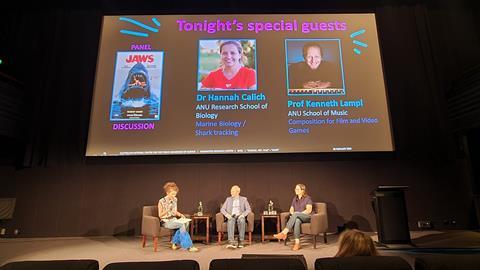
‘For example, when we had Jaws, we talked about sharks and marine science, but we also had a composer, a professor of film music, who studied with the composer of the soundtrack of Jaws,’ explains Jürgens. ‘And he brought in a completely different perspective on the science and how you can affect emotions just by having a specific soundtrack or sound.’
Science. Art. Film. aims to bring science to new audiences in an enjoyable way, building on ‘research in science communication about enjoyment and fun stimulating interest in science’. For Jürgens, the cinema as a venue is also particularly special.
‘[It’s] associated with an enjoyable space where you can hide in the dark if you want to, where you can just be yourself without being seen and experience things that you can’t experience somewhere else. It’s different. You are still part of a crowd, which is fascinating, although also anonymous.’
The programme is just one of POPSICULE’s many initiatives that aim to ‘create wormholes between galaxies’ by connecting scientists and artists in projects and programmes that ‘build narrative power around science, how we think about science and how we feel about science.’
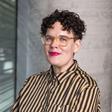


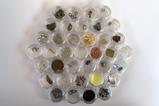

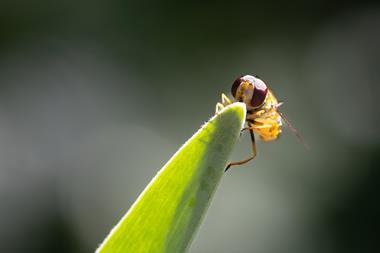











No comments yet